
Quarter
-
Posts
391 -
Joined
-
Last visited
Content Type
Profiles
News and Information
Tutorials
Product Reviews
Supplier Listings
Articles
Guitar Of The Month
Links and Resources
Forums
Gallery
Downloads
Posts posted by Quarter
-
-
Very cool .. my favorite of yours so far!
-
Strait is better, but a little radius at the bridge is not too big of deal as your bar does not get that close to the bridge to make a difference.
-
Sure does not look like any kind of maple to me. Maple does not have a strait open pore grain like that.
My best guess would be something in one of the many so called mahogany, but not really mahogany familys like Philippine "mahogany" / luan.
-
Looking good, lap steels are a fun build. How did you make your bridge and string plate?
I know the shape may be a little over the top but it makes me smile when I look at it so..Thats the beauty of a lap steel build, they have such a rich history to draw from and most anything goes.
-
I'm a big fan of shellac and Tru Oil too. Shellac is one of the very best sealers out there and is compatible with a huge variety of finishes. Besides using as a sealer, I like it for adding a nice and natural amber color to maple and it can warm up other woods too.
Below is some Kush orange flake on some curly maple topped with Tru Oil.
.
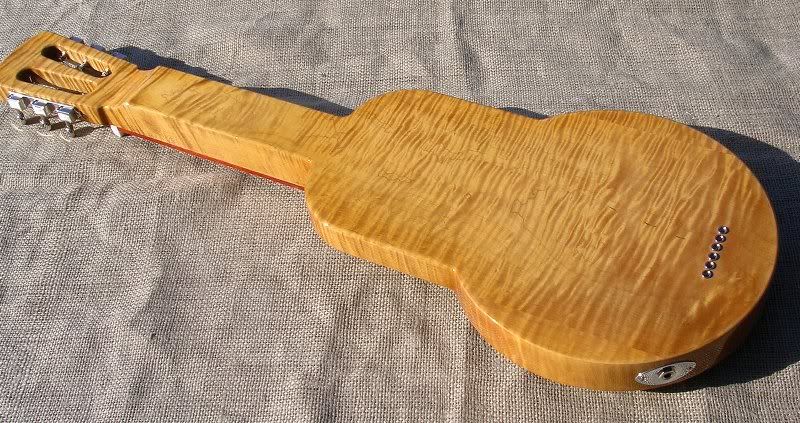

-
i have no problem mixing my own, i just need to find some locally, without having to buy a whole pound.
If you have a Rockler or Woodcraft store local they will have some flake.
For a full on shellac finish, French polishing is the old school way to lay it down. Here is about the best French polishing guide around and even if you don't do a French polish, it has a lot of good information worth checking out. http://www.milburnguitars.com/fpbannerframes.html
-
... Shellac isn't the fastest curing finish in the world when the layers are built up, but it's pretty fast when only one coat is applied. You can handle the item in just a few hours....
The very best shellac to use is mixed fresh from flake. It will dry much faster than any over the counter canned stuff, including SealCoat which is the best ready mixed out there. Shellac.net is a good vendor for flake and button and they carry a good variety of colors too. If your going to use any other top coat other than more shellac, get the dewaxed variety.
-
Tru Oil strait over cocobolo can be a problem. I'd not recommend wiping with acetone either as the oils will dissolve and it will get into the lighter colored wood.
If it were me, I'd prep with a cabinet scraper to pull the top oily and oxidized layer off then shoot a wash / sealer coat of shellac over the whole guitar. A shellac barrier coat will seal the coco oils and leave you a compatible surface to work with.
-
...wipe it with a damp rag and give it a minute to soak in. It usually helps a lot.
Interesting, I'll have to give that a try.
Besides very shallow cuts and sharp knifes, one other thing I've found that helps is to run the piece through at a bit of an angle if its not too wide.
-
Thanks for the writeup! I've been wanting to give this a try and your experiences will definitely help and save me some frustration.
-
jatoba?
-
Thats a great looking chunk of sapelli, but I'll see your ribbon figure and raise you some pomelle
 ... I was lucky to find this chunk for a couple cool lap steel builds in the que.
... I was lucky to find this chunk for a couple cool lap steel builds in the que. .
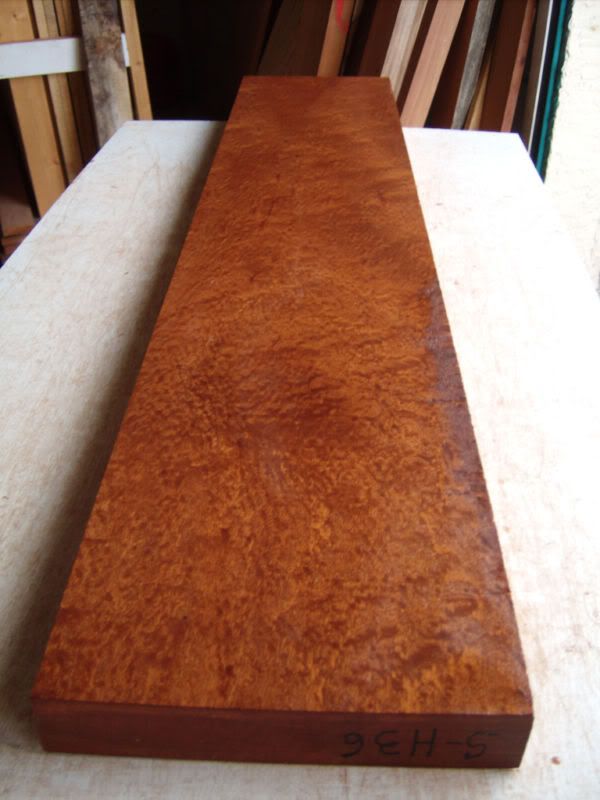
-
... It also has the huge advantage that you can use it in a dusty environment such as a woodworking shop without the fear of combustion. Most other types of electric heaters (and even more so, kerosene or gas heaters) can ignite dust easily. ...
Not having an open flame or red hot coil is a very important consideration in a shop environment. Not only is dust a concern, but igniting vapors from spilled solvents, lacquers, etc is an issue too.
And just a word on portable gas and kerosene heaters, just don't do it! Carbon monoxide is an odorless killer and kills thousands every year. Even those vent-less heaters can be very dangerous. They rely on ultra efficient combustion to be "safe", but the potential for failure is high and the risk is deadly. Gum up the air intake just a little and that ultra efficiency goes in the dumper very quickly.
Oil filled radiant heaters are your very best option for portable heat in a shop environment.
-
When the motor bearings took a dump on my Craftsman 12.5" a while back, it became obvious that so many of the brands are basically the same and use many identical components.
At the time, I figured I'd replace it with the Ridged purely for the better warranty and the extra .5" width was a bonus. I mainly just build lap steels, so 12.5" is enough for my projects.
In the end after going through a bunch of schematics and figuring out the layout, I bought some replacement bearings from VBX for $20 and replaced the garbage cheap Chinese stock bearings.
-
I like that a lot, nice color combos and lines ... good job.
-
the 4-way tele blade switches are usually done to add the bridge & neck in series option along with the normal 3 positions ... i reckon thats what i would want on the rotary
Yep, that's exactly how its setup. I"m not a big fan of rotary switches on a regular guitar, but because a lap steel is played horizontal the ergonomics are much better.
-
Thanks thirdstone
1) I always lose track of how many coats, but its a bunch. My method is always evolving and a moving target, but generally I wipe on about 3 light coats a day with a cotton swatch, then wet sand the following morning before that days coats. For sanding I use a small flat block with some 1000 grit and a spritz of mineral spirits for a lube. 1000 grit seems to be a good grit at this stage as its aggressive enough to work, but not so aggressive as to quickly blow through the soft developing film. Then its a matter of repeating the process until the surface is flat and the low spots are gone and have a good film built. From there, I switch to spraying the last couple finish coats and move up in grit to 1500, then 2000 before the last coat.
So basically it boils down to level as you go .. build it up and block it down. A block and fine sandpaper beats steel wool on large flat surfaces.
2) The bridge is strait, probably an optical illusion.
-
Thanks, I enjoy building them and its a great creative outlet for me. Lap Steel has such a rich history to draw from and there are not a lot of preconceived "rules" as to how it has to look.
-
Thanks, I had a good time building her.
-
Thank you Johny

-
The "F" holes look cool

-
I really like where this one is headed!
-
Love the coloring / shading

-
This is a new model for me, the Junkyard Dog. Its an Idea I had floating around in my head for a while and I'm extremely pleased how it turned out.
Not only is this a new model, but it sports some one of a kind very cool 8 string "Tele" style pickups. I built the bobbins and neck cover then shipped them off to Bryan Gunsher at BG-Pups to do what he does so well. He nailed the tones I was after first try, I would not change a thing.
More info and pics here http://projectguitar.ibforums.com/index.php?showtopic=44297
Some Specs:
Tuning is a modified C6 with a D on top, low to high A-C-E-G-A-C-E-D
24" scale
3/8" string spacing
Corian nut
chambered swamp ash with a feathered black walnut top.
black walnut set neck with birdseye maple fretboard and head cap.
custom "Tele" style 8 string pickups
4 way rotary switching
matching knobs and pickup rings
string through set bridge with a phosphor bronze saddle
Grover Rotomatics
Tru Oil finish
And a couple pics:
.
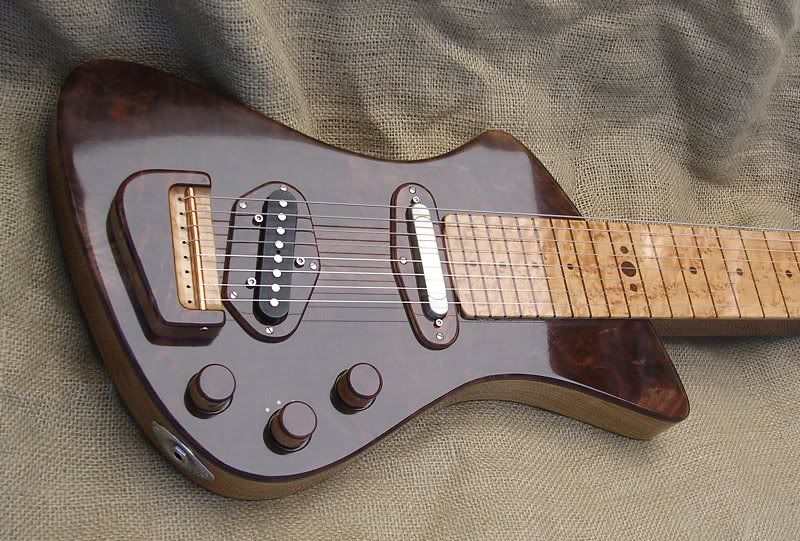
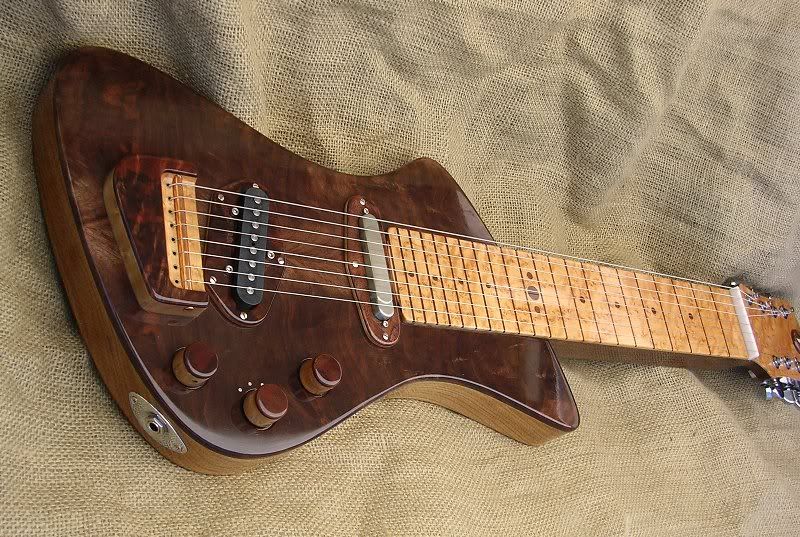
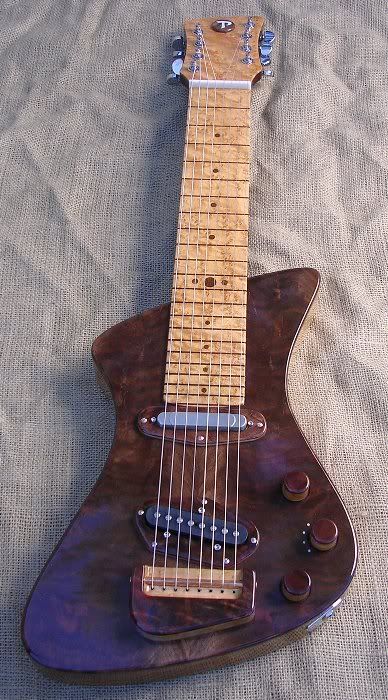
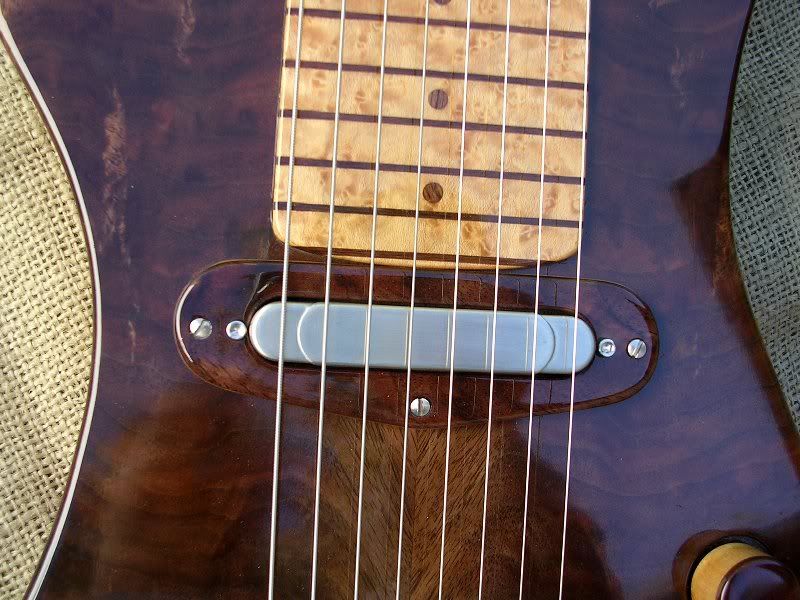

6 Way Rotary Switch
in Electronics Chat
Posted
I like and use rotary switches on my lap steels, but I'm not too fond of them for a "normal" guitar. With lap steel being played horizontal, its easy enough to operate and if you add markers you can see where your at.
Anyways, rotary switches are not too hard once you figure out the pairings and how they work.
I find it helps to take a DVM and as you pin it out, mark out the positions, its pretty intuitive once you jump in. I use a scribe to number them, then use a few different colored sharpies to color code the banks / pole groupings. Once you have it pined out and marked, just draw it out and one by one connect the dots for your chosen combination's.
.